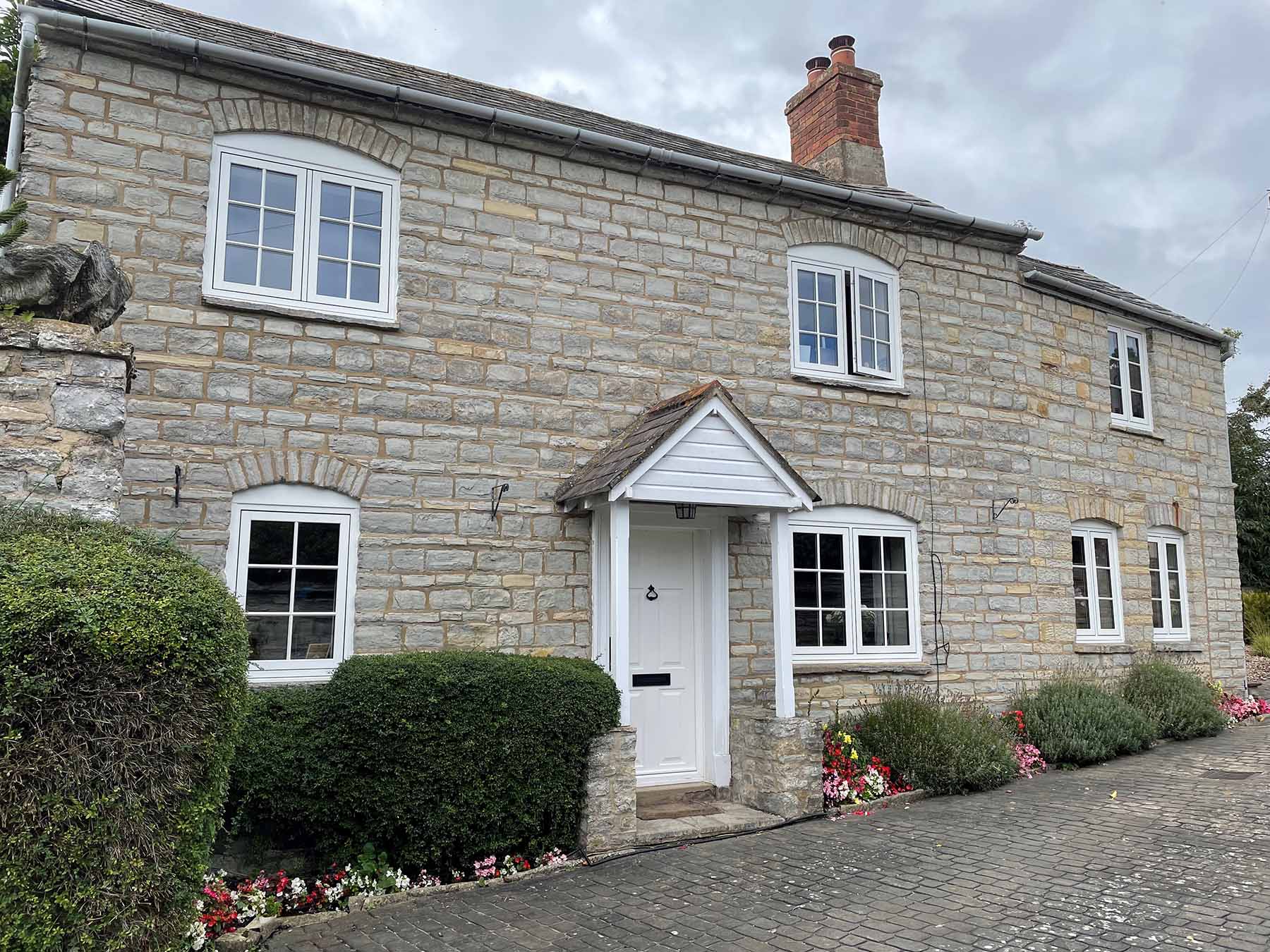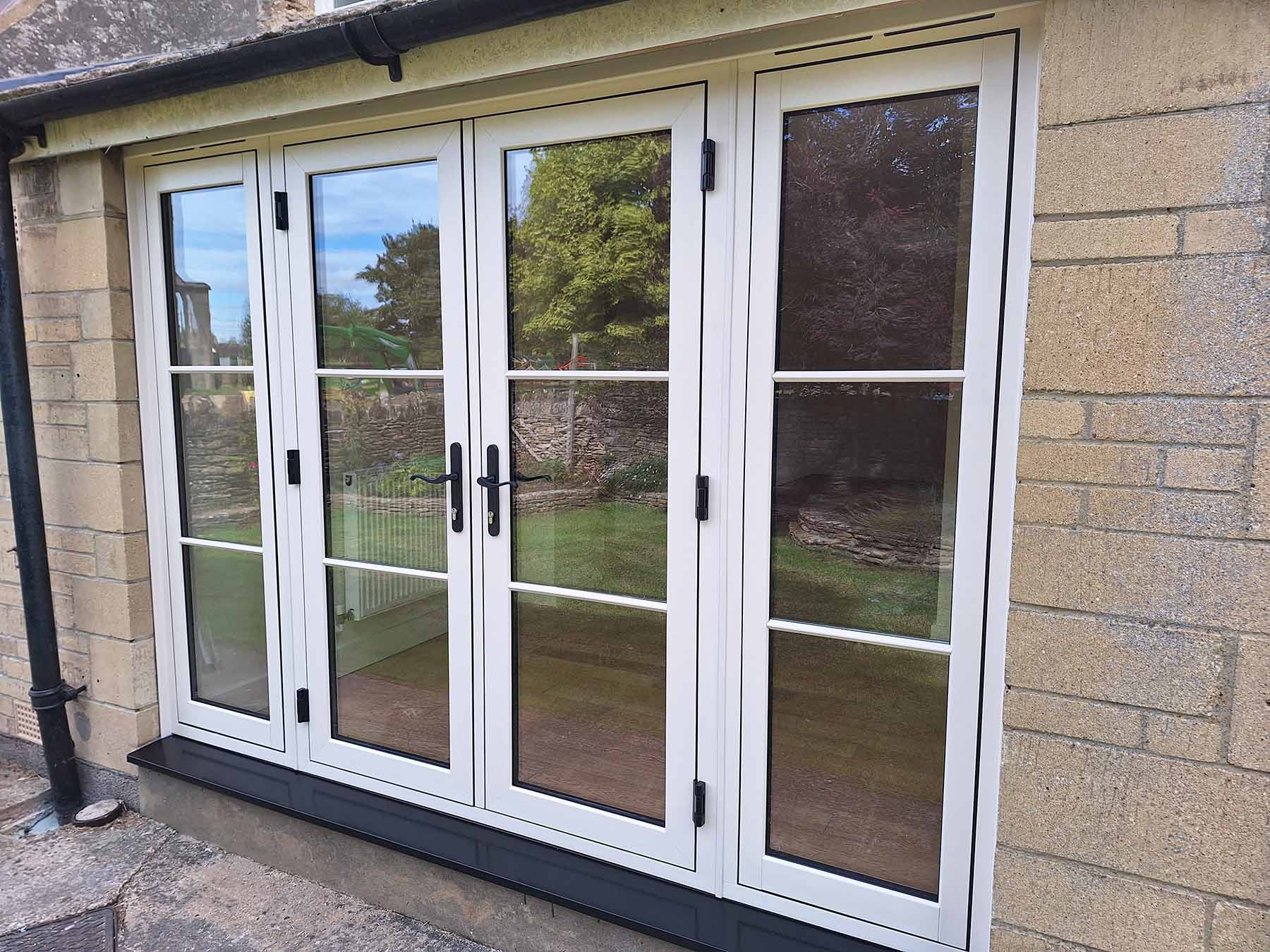Can I install uPVC Windows in a Conservation Area?
Upgrading windows while preserving traditional charm is always a challenge – but this is especially true for those whose properties are in conservation areas. While living in a conservation area has its charms, there are drawbacks including specific regulations and rules surrounding renovations.
You may be wondering: can I install uPVC windows in a conservation area? As experts in heritage uPVC window design, we’ve got all the information you’ll need to find the ideal windows for your home.

What is a conservation area?
Conservation areas are designed to protect the architectural and historic significance of certain regions within the UK for future generations. This means that any alterations to building facades, including replacement windows, need to be carefully considered by planning authorities to ensure they don’t negatively impact the area’s character.
If you are planning to replace windows in your home in a conservation area, you’ll need to know about Article 4, and the impact it could have on the replacement windows you choose.
Article 4: What you need to know
Article 4 refers to a regulation that empowers local authorities to restrict or remove the homeowner’s right to replace windows without planning permission. This is done to preserve the architectural character and overall aesthetic of certain locations, including conservation areas.
How do Article 4 directives affect which windows I can install in my home?
Article 4 directives don’t mean that you can’t replace your windows, but you might need to apply for planning permission to do so. Even minor changes to windows, such as replacing timber windows with uPVC styles, might require a full planning application if an Article 4 direction is in place.
Are listed buildings different from properties in a conservation area?
While listed buildings and properties in conservation areas are both protected, they are protected in different ways.
Listed buildings are individually designated due to their specific architectural or historical significance, and they are subject to stricter regulations regarding alterations and repairs. Conservation areas are particular areas that have specific historic interest, and so are protected by local authorities. While properties within these areas may face some restrictions on alterations, the regulations are generally less stringent than those for listed buildings.
Why choose uPVC? Energy efficiency and low maintenance
One of the questions facing many property-owners in conservation areas when choosing new windows is “why choose uPVC over timber?”.
There are many advantages to choosing uPVC over wooden windows in heritage properties. An incredibly popular material, uPVC is crafted with insulating air pockets, which reduces heat loss in the winter and heat gain in the summer. This makes interior spaces more comfortable, keeping energy consumption (and energy bills!) low.
Another of the main benefits of uPVC is that, along with offering modern performance benefits, uPVC is also incredibly low maintenance, and doesn’t require the re-sanding, re-staining or painting that timber windows do. While new wooden windows may look beautiful from the outset, they require time (and money!) to keep them this way.
Navigating Article 4: uPVC windows for conservation areas
The exact restrictions in place under Article 4 will vary from location to location, and the final decision on whether or not your planning permission will get approved will be made by a conservation officer.
However, there are some things you can do to give your plans the best chance of approval. Conservation officers are more likely to approve the use of uPVC windows if they replicate the traditional designs seen in conservation areas.
While most original windows on period properties are typically made from timber, uPVC windows can be accepted as replacements if they are authentic enough in design.

Traditional timber joints
One of the telltale signs of a window made with uPVC is a diagonal weld on the corners of the frame, and this could result in your planning application being rejected. Instead, opt for uPVC windows that feature the types of joints seen in traditional historic windows.
At Timberlook, we craft our range of flush sash casement windows with Timberweld technology, ensuring the appearance of traditional timber mortise and tenon joints instead.
Wood-grain effect foils & finishes
Some local authorities will approve uPVC windows if they are finished with wood-grain foils, as these mimic the appearance of heritage timber windows.
Replicating the subtle variations and nuanced grains found in natural timber, wood-grain finishes for uPVC increase the chances of approval when seeking planning permission under Article 4.
For example, our Timberlook timber effect uPVC windows come in a range of heritage-inspired traditional woodgrain finishes such as Irish Oak and Rosewood. The finishes are incredibly durable, weathering the elements without the maintenance challenges associated with real wood.

Heritage extras: cills, hardware and decorative bars
Attention to detail is everything, and this is especially true when looking for windows that stand the best chance of receiving approval in conservation areas.
For our flush sash windows, we offer a range of decorative options that replicate the style of authentic 19th century timber designs.
This includes transom weather bars, fully-suited dummy peg stays, deeper nosed Radlington Cills and premium hardware options – including the ever-popular ‘Monkeytail’ handle. While they won’t guarantee approval, these heritage design features can disguise uPVC as historic timber windows.
Our Timberlook Specifiers Guide is easily available online, and contains all of the technical information about our range. This guide is an excellent tool to use when submitting an application to the planning officer, as it details some of the finer details of Timberlook windows and doors.
Timberlook: heritage-style uPVC windows for conservation areas
At Timberlook, we specialise in crafting products that draw on the traditional styles of timber windows and doors. Our flush sash windows are so authentic, they’ve even been approved by Cotswold Council for use in a number of historic properties. Ideal as uPVC windows for conservation areas, the Timberlook range takes the very best from traditional, original design and the benefits of modern materials.
If you’d like to find out more about our range of windows and doors, please get in touch! We can also connect you to one of our trusted installers in your local area. Please get in touch with our friendly team by emailing sales@timberlook.com or calling us on 01253 888 222.
Related posts



